You’re listening to Burnt Toast! This is the podcast about anti-fat bias, diet culture, parenting, and health. I am Virginia Sole Smith.
Today I am chatting with Lindsey Guile. Lindsey is an Associate Professor of Art at Dutchess Community College, and a body and fat liberation artist.
Lindsey uses large format drawing and ceramics to explore concepts of self image, body image and self worth through the lens of contemporary feminist theory. Her work has been exhibited at The Arnot Museum, The Dorsky Museum, The Birke Art Gallery, The Mary Cosgrove Dolphin Gallery, Untitled Space Gallery, Women’s Work Gallery, The Williamsburg Art & Historical Center, and so many others. Lindsey currently lives in Poughkeepsie, and is someone I know locally through fat activism work here in the Hudson Valley. She is awesome!
Seeing Lindsey’s eight foot tall drawings of fat bodies in person was one of the most powerful experiences I’ve had since I started writing and thinking about bodies in the way that I do. We are putting lots of images in the show notes, so definitely check them out and definitely follow her on Instagram. But know that these images are not doing her work justice. The actual size and scale of these drawings is something you have to experience in real life.
Lindsey is a total delight. I love talking to her about her process, about how she thinks about this work, and about the power of drawing bodies. So here’s Lindsey!
PS. If you’re enjoying the podcast, make sure you’re following us (it’s free!) in your podcast player! We’re on Apple Podcasts, Spotify, Stitcher, and Pocket Casts! And while you’re there, please leave us a rating or review. (We like 5 stars!)
Episode 105 Transcript
Lindsey
I am a self-described feminist, body neutral, fat liberationist, body liberationist, figurative artist. I know there are a lot of terms there, but there is a lot that I want to embrace. I work mainly in large-scale drawings that explore the idea of femininity from the feminine gaze. I have people who model for me, they can be clothed or nude. It’s totally up to them. I create an atmosphere that’s really based on consent. And I’ve been doing this regularly for about five years, although the series started about 10 years ago.
Virginia
Bring us back to 10 years ago. What made you say “I not only want to draw bodies, I not only want to draw people, but I would like to draw them eight feet tall. I would like them to take up all of the space?”
Lindsey
How often do feminine folks get to just take up space unapologetically? That’s one thing that really stuck in my brain in terms of size, is that I wanted them to really just command a room—quietly though, because I do draw versus paint. And I think painting, while wonderful, is a lot louder. I think there can be such a power and sometimes subtlety to drawing.
But where it started was me white knuckling my way through my own recovery from diet culture and disordered eating which was just so difficult for me, especially when I was in my Master’s of Fine Arts program. I remember laying on the floor in my studio apartment having a panic attack, knowing that I could either continue to engage in diet culture or I could pass my classes. It took up so much of my brain power to do all that. And it got to the point where it just was not sustainable. I finally had to be like, I can’t do this anymore. I started following some folks online who were fat and I was like, look, these people are doing this. It’s okay, I can let this go.
I’ve always been a figurative artist. I love drawing the human figure. So I was like, “You know what, maybe I need to draw myself nude.” I had always been interested in being a nude model. But my body shape wasn’t what people drew when I was a student. So it seemed very cut off to me. One of my friends was like, “Hey, I think you need to draw yourself.” So I drew myself, collarbone to thigh. It actually hangs in my bedroom now, that drawing. And it was difficult, because I was dealing with my own body image issues—but then people were coming into my studio like, “Oh my gosh, like, look at the draping on the stomach from all the weight fluctuations. This is really beautiful. And this is such a great drawing. I love how you’re honoring that body.”
I didn’t tell people it was me.
Virginia
Oh, that’s interesting. So you’re really getting their unfiltered response. They weren’t like, “Oh, it’s Lindsey so I should say something nice to Lindsey about Lindsey.”
Lindsey
Yeah. Then it was like a light bulb that went off, which was: I can use the system and the hierarchy of art to start flipping the narrative and draw fat bodies. And figures that are not just fat—although I think a lot of larger people come to me because I am larger, and it’s a safe space to start to tell people’s stories in that way. Also, having drawn myself and understanding how difficult it was to look at myself in that way, I think it gave me extra compassion for the people coming in, where I know this is a very scary thing for them to do.
Virginia
Since you brought up drawing yourself, I’m curious to hear how that experience changed how you relate to your body?
Lindsey
So I joke with people that the only time I’ve ever been small was when I was born because I was super early. I’m also just shy of six feet tall, so I’ve never fit into a certain beauty narrative. And even when I was the most engaged in diet culture, I still have always been plus-sized. To see myself there in this drawing and to see it as an artist and as the person who drew it was really profound. I did my first drawing of me on a large scale in 2019 and it was really nerve wracking to see that in a gallery and people interacting with it. I remember actually it was in a college I teach at, one of my students was like, “Does that look like the person?” and I felt like saying “Well, I don’t know, does it?”
I guess it’s a little weird to put yourself out there, but I’ve learned to look at myself with the eyes of an artist rather than the eyes of the patriarchy and diet culture. It’s taught me a lot of kindness towards myself. I’m not saying I don’t struggle with it, but it’s given me so much more.
Virginia
It feels like a way of reclaiming your body.
Lindsey
One thousand percent. That’s actually a big theme for a lot of people I work with: Reclaiming their body in some way, shape, or form. Actually, I was telling a friend this morning I just started a new drawing of myself. I’d wanted to do one when I hit 40 and then I just wasn’t in the space to do it. But I’ve done a lot recently with therapy. I got a bunch of tattoos, a nose ring. I was like, “I think I’m ready to tell that story of me again.”
Virginia
I was just thinking how tattoos are often another way people reclaim their body. And so many of your subjects have tattoos and you draw tattoos really beautifully.
Lindsey
The first tattooed model I drew, that’s specifically what she talked about. She’s a larger woman and she talked a lot about how people would stare at her and she decided that she was going to give them something to stare at. She has so many tattoos. In fact, it’s funny—she’s a dear friend now—she’ll be like, “Lindsey, I have more tattoos. When do you want to draw me again?” She’s also a tattoo apprentice so it’s like wrapping around.
Virginia
Let’s talk about your process a little bit. I don’t speak Fine Art particularly fluently, but I do think there’s an image we have of figure drawing of the model being just this sort of amorphous body, right? It’s like men painting women because they’re beautiful and nothing else. They’re not people apart from the bodies. But your process is so different from that.
Lindsey
I’ve been working as a figurative artist for for over 20 years and I’ve seen exactly what you’re talking about. I’ve even joked with my students that [the model is] a still life that breathes. And I realized I was still objectifying our models which, obviously was a problem.
With my process, I usually use social media and I’m like, “Hey, I’m looking for models.” I explain the whole process, that you don’t have to be nude. It’s consent driven, so you can tell me—I had a model once who was like, I’m okay with being fully nude but I don’t want you to show my vulva. And I was like, perfect, not a problem, we’ll pose around it.
So they reach out to me, we set up, we usually have a little bit of a chat. And I utilize the college’s drawing studio to photograph because I just don’t have room in my studio at home. And while they are up on a podium, that’s more for just so I can get the right angles. I try to create this atmosphere that is just really respectful.
Usually, when they come in, they get to the level of dress or undress that they’re comfortable with. We get ready to start and I say, tell me about the story of your body. What are those things that have influenced you? They know that they can tell me anything. But they can also say, “Please don’t utilize this in an artist talk.” So I do tell them, “I’m going to give talks. What can I say? And what can’t I say?” And we go from there.
Some models are like “I don’t know how to pose” and I say I just want something really natural, what feels comfortable to you? How do you like to stand? How do you like to sit? And a lot of times my goal when I first start in talking with them and just getting them comfortable, is so that they stopped noticing the camera.
Virginia
I have a similar thing with hoping they don’t notice the tape recorder, so I can relate to that.
Lindsey
And it’s also important to know that if at any point it becomes very emotional for them, which it definitely has, that I will actually put the camera down. Because I’m not there to exploit feelings. It’s happened a few times where a model was just so overcome with that moment that I set the camera down and they said “You can keep photographing.” I’m like, I want you to have this moment for you.
So it usually takes about an hour to photograph. I zoom around, like I’m on the floor, I’m on a roll-y stool. I photograph all the models from below so that when you as a viewer are in a gallery and they’re larger than life, they look down on you. It’s very deliberate to put the viewers in a position of submission to the figures. It’s usually pretty subtle because I don’t want to smack the viewer side of the head with it. But I really want them to feel it.
Virginia
I wonder is that vulnerable for your subjects? Because I’m just thinking of how women are trained to photograph ourselves and from below is never the angle that we’re told is the right angle.
Lindsey
No one’s really ever said much because I do explain why this is. They can also say, “I’m really insecure about this part of me or that,” and we’ll work around it in photographing. But I can also say, “well, let let me try this shot and then I can let you see if you want to see.” I think I’ve only had three models who actually wanted to see the photographs of them. Oftentimes they’re like, “I trust you to do what you do.” And we’ll go from there.
Then I choose the image that I draw from. I haven’t had anyone complain yet because I usually find an image that felt like our session. I try to keep the technical aspects of a drawing out of it and just think, what did this feel like for them? Were they really tentative? Were they just really empowered? Were they somewhere in between? And go for it.
There have been a few times where I’m photographing and I knew the shot the minute I got it. There was a model, she’d model for me once, and she was like, “Can I model for you again?” And I said, “Yeah, let’s do it.” She came in. She’s like, “I don’t want to talk.” Okay. She was like, “I have some emotions I have to get out and I know you’re a safe person. I’m okay with you photographing it. And I’m just gonna move around. I’m probably going to cry. I just want to get it out.”
Virginia
Wow.
Lindsey
And she did it. And I knew the minute I took the photograph, it was just incredibly powerful.
I work primarily in drawing because I feel that charcoal especially is just so beautiful. It’s very tactile. I wanted them to feel the hand of the artist in there.
One thing that comes up is when people are like “Oh, people who don’t love themselves, they must stand in front of the mirror and like shake their stomachs,” or something like that. For me, it was very different. For me, I disassociated from myself. I just pretended I wasn’t there from the neck down.
Virginia
Prior to drawing yourself?
Lindsey
Prior to drawing myself. So I don’t go to hyper realistic drawing because I feel like I’ve been given such a gift by the people who model for me. I want there to be a sense of touch, that they’ve been loved and cared for, this image that they’ve given, and that’s one of the most important parts to me. That they know that in this space that they’ve been cherished and their stories are so important. And charcoal does that for me. I think it’s just very eloquent and can do a lot without telling people how to feel at least in the way that I handle it.
Virginia
I was going to say there’s such a softness to your work, which isn’t quite right. There is softness to the bodies. The work itself feels very strong to me, but there’s a loving quality to it that comes through. I’m guessing that’s what you’re talking about here with the medium and wanting to be clear that this isn’t a photo of somebody’s body, even though you also are amazingly realistic. Like, the way you draw people’s tattoos is mind blowing. There is a level of insane precision here, just so we’re clear. But yes, it is clearly an artist’s view of someone, not a photo of someone.
Lindsey
I love it when people bring up the tattoos. My piece “Brazen” is of the woman I mentioned earlier who talked about using her body to reclaim tattoos. I have three drawings of folks who are heavily tattooed. One I just finished this summer [above] and it probably was the most nerve wracking thing for me to figure out artistically. I thought I had it with the first two drawings I did. And then the one I just finished, the title is called “Unwavering” if people want to look it up. She has so many tattoos. Usually I draw the form of the body first, and then I add the tattoos on. I had to draw the tattoos first.
Virginia
Oh, wow. You put her body around her tattoos. That’s fascinating.
Lindsey
And I was like, how do I do this? You’re drawing other people’s artwork.
Virginia
So no pressure there.
Lindsey
Yeah, no pressure, no pressure. And it’s on a 3D form. And all three of those models are tattoo artists.
Virginia
So they would know if you miss something.
Lindsey
And they’re all good friends of mine. And I every now and then I’ll message them, like I did the model I just finished, I was like, “I kind of guessed.” She’s like, “I won’t tell anybody.” I’m like, “Okay, perfect.”
Virginia
Let’s talk a little bit about the response to your work. I’m curious both what the models think but then more broadly, when you’re doing shows and showing your work, what kind of reactions do you get?
Lindsey
You know, overwhelmingly positive. I have not had a model say, “I don’t like it.” Probably one of my favorites was early on in the series, I had worked from a former student and she came to a show early to see the piece. She was crying in front of the piece and she said, “you made me look beautiful.” And I said, “I didn’t make you anything you aren’t already.” It’s funny because I’m a bit of an awkward person, socially awkward.
Virginia
I mean, I disagree, but keep going.
Lindsey
I project a lot of confidence. Years of working retail, right? But inwardly, sometimes I’m screaming “I don’t know how to interact.”
But I love it when people are like, “I want to show this to my friend or my daughter,” or something like that.
There’s been a few times though, where I’ve gotten a few like “ew, gross.” I had a small solo show here in Poughkeepsie and I was watching the gallery and a gentleman came in, and probably gentleman is a kind word here.
Virginia
Generous.
Lindsey
And he didn’t see me. He was like, “ugh, ugh,” and he kept making these gross sounds. Then he looked at me, looked me up and down, and said, “you must be the artist.” And I was like, “Yes, I am.” And he was like, “Well, I wouldn’t hang these in my bedroom. Why can’t you draw normal people?” And of course, this is the town I work in and I’m kind of a public figure so I had to be very nice, which hurt me.
Virginia
I love that he thought art should be drawn for him to…hang in his bedroom. That’s such an interesting way to think about art. Do you know what I mean? That’s how entitled he feels to these bodies. Interesting.
Lindsey
He was like, “I wouldn’t want to wake up to them.” And I’m like, “well, I don’t want you to wake up to my drawings regardless.”
Virginia
Sir, I would not want to wake up to you.
Lindsey
Someone didn’t say it to me, they said it to someone related to the gallery, that they thought my work was pornography.
Virginia
Just because some people are naked?
Lindsey
Yeah, just because the nudity. And actually I go out of my way to not portray anything overtly sexual. It’s just not what I’m focusing on. So part of me wants to be like, “Wow, your porn must be really boring.”
Virginia
Not a lot happens in your porn.
Lindsey
To each their own!
Virginia
I mean, I guess there is a group of people who just think nudity equals pornography no matter what. Do they not ever go to Italy? Did they not hear of the Renaissance? I don’t understand because we have centuries upon centuries of naked people in art. But I wonder if there are some folks who are especially quick to go there because you are showing are fat bodies?
Lindsey
I think so. Because the work does make people uncomfortable. Because they’re not Photoshopped, because they’re not the beauty ideal. I think it forces a lot of people to confront their own biases. So it might be an easy way to say, “This is inappropriate.” Hopefully those are the people that even afterwards think about the work and let it kind of sit in the back of their head and maybe changes a little bit of what they think. You know, that’s all I can hope.
Virginia
This is like the same with the trolls who message me about my work saying, “I don’t think fat chicks are attractive.” And it’s so interesting to me, because nothing I write about has to do with whether men find fat woman attractive. I think it taps into the fact that there are some men who do find fat women attractive and yet feel like they can’t be public about it. So then they have to turn that negatively onto fat women. I said that, awkwardly, but you know what I mean?
Lindsey
It’s their denial.
It’s interesting that the few people I’ve known that have said this about my images being pornographic are older women.
Virginia
Oh, so it’s tapping into their own stuff.
Lindsey
I think a lot of the way that they grew up, that thinness was ideal, you got it through whatever means necessary. To then see people really living in their own bodies, and not just in bodies, but then modeling in art, and nude. It challenges a lot of those preconceived notions.
Virginia
This is making me think of something you told me previously, I can’t remember if it was a professor of yours or someone who commented on a pose, and was like, “Oh, she’s so ashamed of her body because she’s covering.” Do you want to tell that story?
Lindsey
Yeah, it was about my first large drawing of myself, actually. When I took the photo, I’d cross my arms and one is kind of underneath my chest and one’s kind of going over top and it’s meant to be like this hug. It was more of like, “It’s going to be okay” for myself. And because I’m busty, I kind of caught my bust in my arm. I remember my professor was like, “Well, that’s not correct anatomically.” And I’m like, “Pretty sure it is.”
And she was like, “well, I feel like this figure is just ashamed of herself. And like, she’s sitting in the mirror hiding.” And I’m like, “This is a very kind of loving hug. And she’s not covering anything unless you count the sternum, right?” The stomach was there. The vulva is there. The breasts are there. And I said, “I really think that you’re projecting your own insecurities onto my figure.” And everybody was just kind of quiet.
Virginia
I think they knew. I mean, the first time I saw your pieces in person, you were there— I cried. And, I was thinking before we started recording, like, why did I cry and what it was. It felt just very visceral. It was so healing to be in the presence of fat, beautiful bodies like that, and feel the power that they held. But I can see, for someone who’s in a different place with fatness with their own body, it’s going to bring that up and be really challenging and that’s also really good.
Lindsey
That’s exactly what I want. I want people to go in there and really start investigating for themselves and reevaluating how they see themselves and see others and how they judge others.
I generally don’t care what people think about my artwork. Took a long, long time to get over that.
Virginia
That sounds very evolved of you. I’m impressed.
Lindsey
Well I kind of had to, because I’m a very sensitive person and I want people to like me. But it took a long time for me to realize that this is what I want to do. People are not going to like it. But there are people who it’s going to move.
Virginia
Tell us a little bit about your teaching process, and how this comes into play.
Lindsey
I’m an associate professor of visual art at Dutchess Community College. In particular, I teach the figure drawing class. You know, when we look at art history—which, I love art history, but a lot of it is women drawn by men, women in a very subservient position in the pieces—it’s very much drawn from the male gaze. So I’m very aware of that. One of the things I do when I teach the class is, I focus a lot on bringing in contemporary figurative artists. I tell my students that this represent sthe wonderful diversity that we have in the class.
But also, in many ways, I take body liberation and stretch it out to not just include weight. The classroom is, to me, fully inclusive, to the best of my ability and I will keep learning. We have trans and non binary models, we talk about using language beyond the binary. I talk with my models ahead of time, and I say, “when I talk about your figure, and I’m going to have to, what terms are you most comfortable with?” But then it’s also making sure I have a lot of body diversity, as much as I can. Though sometimes you’re limited by just the model roster.
I’ve also been known to say like, “Okay, we’re looking at this model, and this is how this anatomy shows, but it’s going to show on someone different like me who is larger.” And it neutralizes this idea of fat and largeness. They seem to respond really well, which has been great. For a while, we didn’t have many curvy models. We had one of our long-standing models, she can only model once a semester. She came in and after she left, the next class, they were like, When is she coming back? We love her. You can see so many different things.”
Virginia
What a powerful way to give them an appreciation of body diversity.
Lindsey
I used to be very insecure about my chest. And I saw how chests come in all shapes and sizes and I’m no longer self conscious about that anymore. In fact, I’m a nude model myself.
Virginia
So do you do that for other artist friends? How does that work?
Lindsey
I model up at Woodstock School of Art in the summers. I just tell them when I’m prepared and I model for their classes and their open studios. So I get to work with a lot of different artists there.
Virginia
What is that like, the experience of nude modeling? It feels like it’s probably a lot more work than people realize.
Lindsey
Yes, I joke that all I have to do is sit still look pretty, right? Or just sit still. I don’t have to look pretty. But sitting still can be so hard.
Virginia
So hard! Oh, I’m terrible at it. I would not last five minutes.
Lindsey
Usually you get a break every 25 minutes. But if you go into a 25 minute pose oftentimes you’re like, “Is my leg still there? Oh, no, my leg is there. It really hurts.” Or, “I have sweat running down my back, or my nose itches.”
Virginia
The nose itches would be killer. I bet you regret a lot of poses like 18 minutes in. You’re like, this was not the pose.
Lindsey
You learn the capabilities of your body as you’ve been doing it. But sometimes I’m like, “Oh, yeah, I totally put my hand there and it’s supporting all my weight.” I said it’d be fine for 20 minutes and then like 10 minutes in and you’re like, I’m going to die.
Virginia
I don’t have a wrist anymore. It’s fine.
Lindsey
But it’s also very empowering because it is a safe space. There’s only been one instance where I’ve been modeling and someone was clearly upset that they had a plus size model. And I just stared them down. Because he wasn’t drawing!
Virginia
Oh, he was just sitting there sulking?
Lindsey
Yeah, he was sitting there sulking. And that is not acceptable. As someone who also teaches the course, you do work. I never stare people down because I don’t want artists to get nervous. But I stared him down until he started working.
Virginia
I enjoy that greatly.
Butter
Lindsey
I hope it’s okay to just give a shout out. And I think it’s to tattoos.
Virginia
Yay. That’s fun!
Lindsey
The way we reclaim our bodies with them, and the inspiration they’ve given me. Particularly a shop that I absolutely love, if that’s alright, is Guts'n Glory in Rosendale. That’s where those three tattoo artists work. They’ve given me such amazing work and made me feel so much more myself and empowered me. It’s an amazing shop. There are queer folks there. It’s just absolutely beautiful. So they’re my butter.
Virginia
I love that. I do not have any tattoos. Yet, I should say. Life is long, we’ll see. I’ve just never been able to commit, but I have a deep appreciation for them. I think that’s the overthinking thing I can really relate to. I’m like, “They’re so wonderful I couldn’t possibly pick one!” Which is, you know, anyway, we can unpack that later. But I love hearing what they do for people and their relationship with their body. So, that’s such a great butter.
I was also overthinking what my butter should be today, when I realized it’s very obvious. Since I am talking to Lindsey Guile my butter is “Valiant” by Lindsey Guile, [above] which is the most incredible drawing that I just got from your “Unapologetic” series.
This is a present that Dan and my family all went in on together, as a congratulations for my book. So it’s really special that they wanted to do something nice to celebrate the book. But also the fact that they picked Lindsey’s artwork and then it led me to get to know Lindsey—I’m so excited about it. I’m currently on the hunt to find a framer who can frame something this large.
Lindsey
It’s only almost 80 inches. It’s fine.
Virginia
I emailed my local frame shop who are so lovely and do such good work, and they were like, “We are not set up for that.” But you’ve given me names of a couple places. So this is my Butter Project. I’m going on a little framing odyssey with it. And you came over and we picked the wall in my house that it’s going to hang on. It will not be done by the time this episode airs, but I will definitely do a follow up when I have it in the house so everyone can see it. It’s just amazing. And there is an incredible space tattoo on Hannah. It was one of the details I really loved about it. And I just love her expression.
Lindsey
I’m so glad, too, because Hannah was fantastic to work with as well. And one of the few times I’ve actually gotten to talk with someone who occupies this body liberation space.
Virginia
We should say the model is Hannah Noel Smith, who is a therapist and fat activist who specializes in eating disorder recovery. She’s also a buddy of mine from the Body Liberation Hiking Club.
Did you get to know her through drawing her? Or how did that work?
Lindsey
So I had an artist residency at the Blue Mountain Center and I put out a call on social media that was looking for local models and she got right ahold of me. It was really funny because when we met, she was like, “I found you shared by another fat creator.” And then was like, “Oh, my gosh, you’re in Poughkeepsie? I’m in Poughkeepsie!”
Virginia
Smallest world. Well, it is really exciting because the fat activism community is, of course, large and spread out all over. But here in the Hudson Valley, we don’t have so many of us. It’s been fun to start to come together a little more.
Lindsey
I think all my friends are like, “Yes, we know Virginia, you posted about her.” I’m like, “She’s really cool.”
Virginia
Same, same. Definitely a mutual admiration society.
Lindsey, thank you for doing this. Why don’t we wrap up telling folks where we can follow you? And how we can support your work?
Lindsey
First of all, again, thank you for having me. This has been absolutely delightful.
You can follow me on Instagram at Lindsey Guile Studio and I have a website. In terms of support, I have no shows right now. I’m working right now to show later. I do have two solo shows coming up in the spring of 2024, one here in the Hudson Valley, one out in the Rochester area. So if you follow me and you can come to an opening, that’s absolutely wonderful. And if you ever have an interest in buying something, just send me an email. I’d love to have a shop, but I already have a full time job.
Virginia
Well, when you have details on the show, we’ll put them in the newsletter and make sure folks know and go. And I can’t wait to go to the next one.
Lindsey
Thank you so much.
The Burnt Toast Podcast is produced and hosted by me, Virginia Sole-Smith. You can follow me on Instagram or Twitter.
Burnt Toast transcripts and essays are edited and formatted by Corinne Fay, who runs @SellTradePlus, an Instagram account where you can buy and sell plus size clothing and also co-hosts mailbag episodes!
The Burnt Toast logo is by Deanna Lowe.
Our theme music is by Jeff Bailey and Chris Maxwell.
Tommy Harron is our audio engineer.

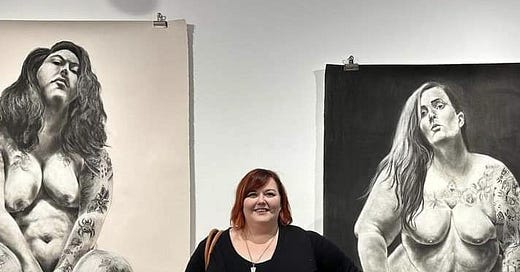
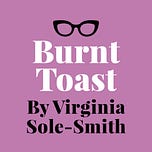


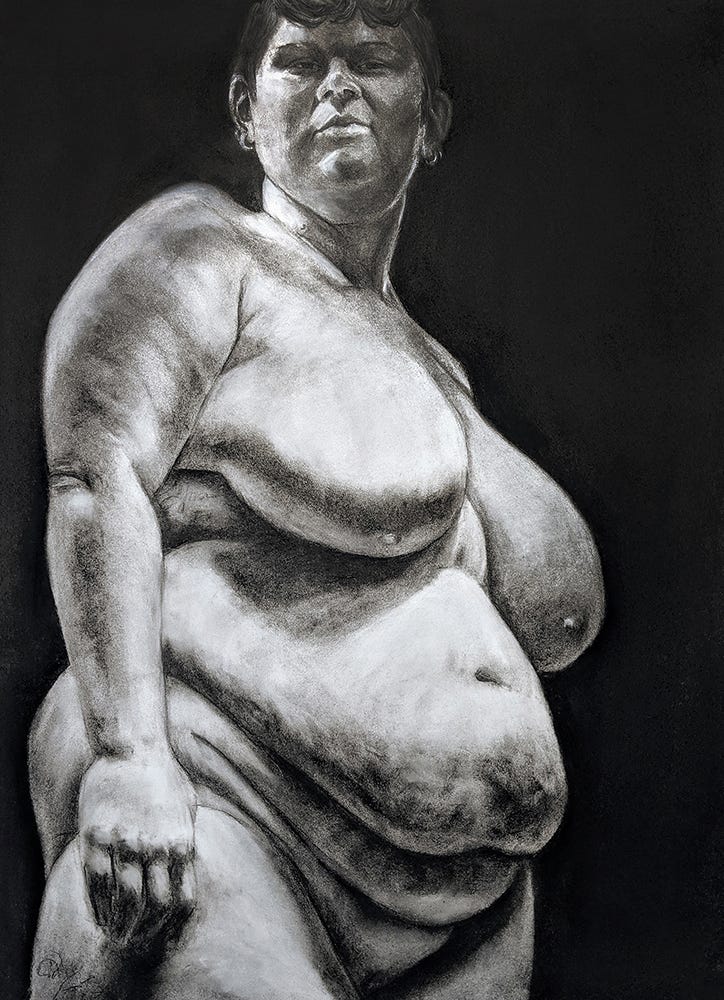
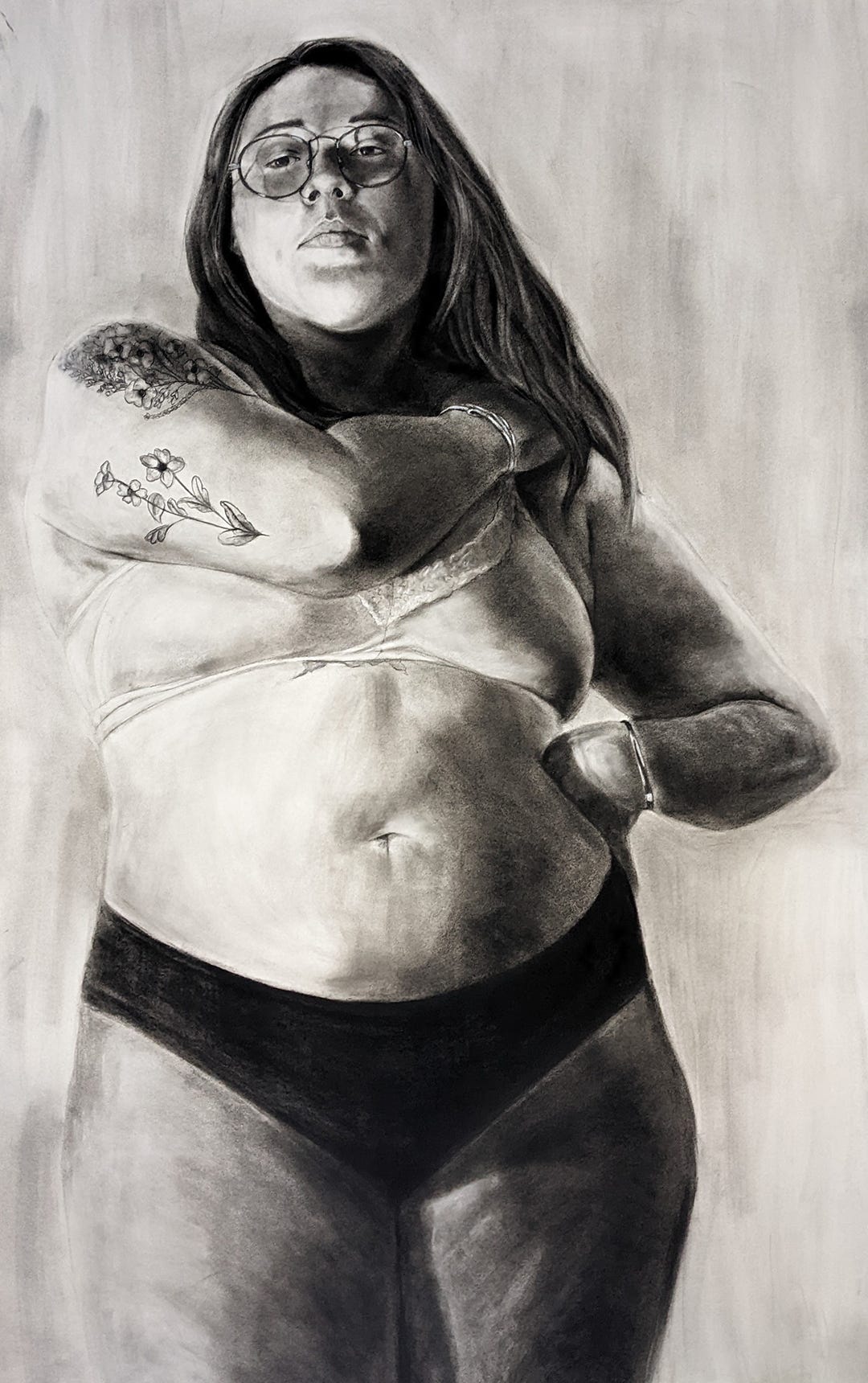
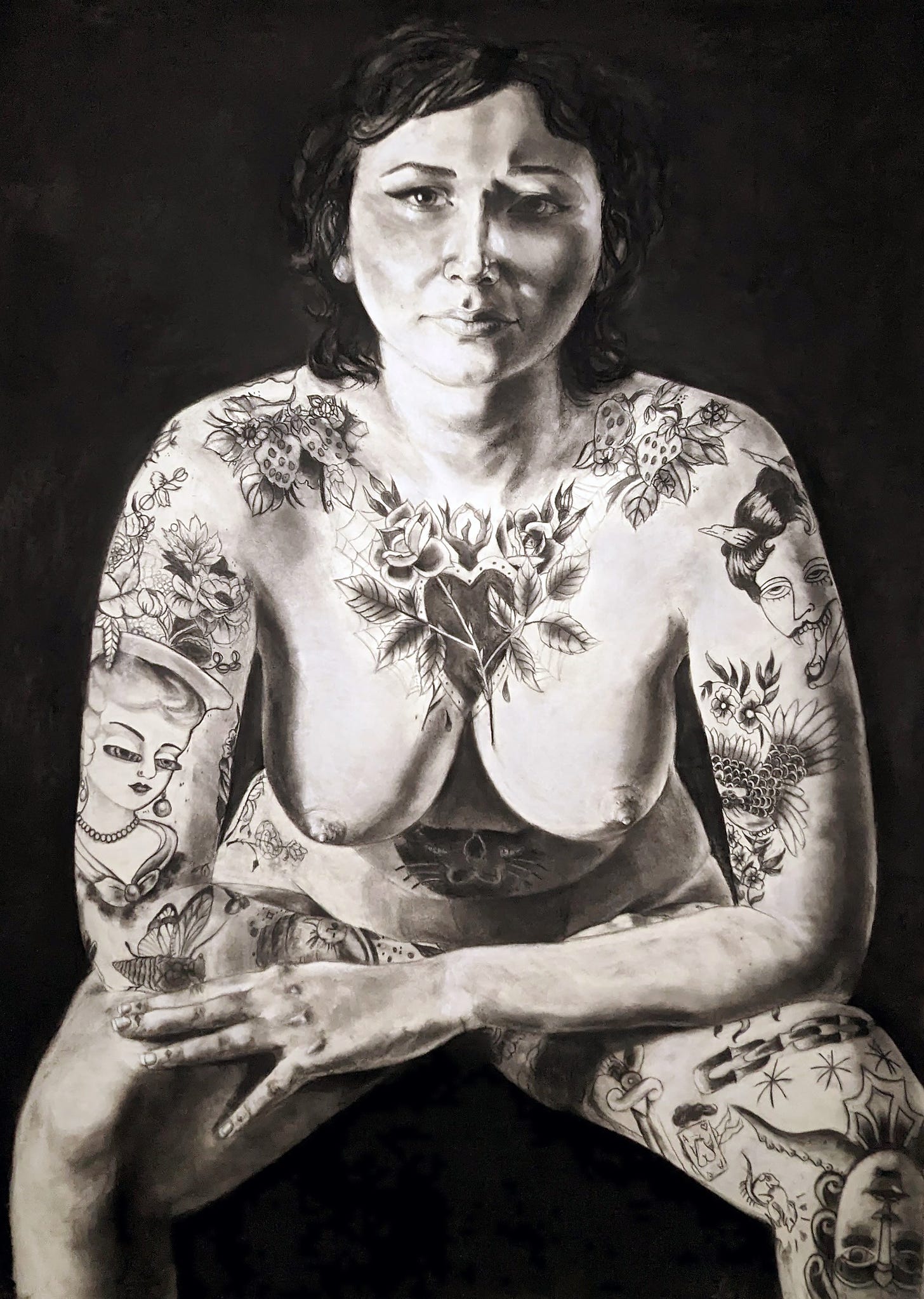

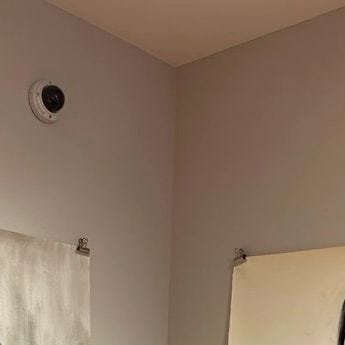





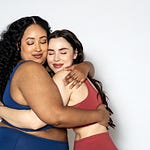
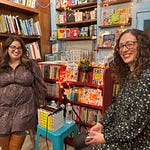
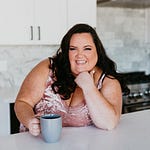
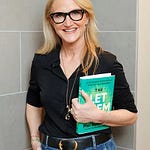
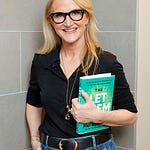
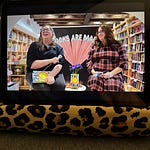

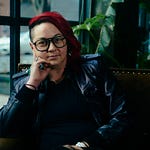
These are so beautiful. I also don’t speak Fine Art so I hope it isn’t inappropriate to say I found myself really wishing for a coffee-table-style book of Lindsey’s work! But then realized I’d still miss out on the power of the scale and positioning… I can only imagine how amazing to see them in a gallery!!
Ahhhh a coffee table book would be SO GOOD.
This is a future plan, to have either a catalogue or coffee table book! I am aiming for spring 2024! Thank you ❤️
Thank you for this. They are stunning. I see a lot of bodies in my line of work and have often wished I had artistic talent to draw them, it's such a telling story.... I could show that awful man some "normal bodies", he has not a clue.
And because I like to research, I read Hannah Noel Smith's thesis. And I would thank her and her mentors for this work as well. It will take a new generation such as herself, better and more research, to overcome the barriers of fatphobia on the medical community and to genuinely/thoroughly treat eating disorders.... not to mention change the social landscape of "health"
OMG! Now I have to find Hannah’s thesis!
I loved this and I think it's an awesome thing to do.
Not quite the same thing, there was a girl doing quick mini watercolours the other day so I got one and it definitely made me rethink how I see myself.
I’ve enjoyed Lyndsey’s work so much and this was a great podcast. Thank you Virginia. You make every day better
Thanks Susan!
Oh this was a breath of fresh air. I'm crazy about Lindsey's art. I fee so seen. And also admire the woman who offered themselves to her eye. Beautiful.
This was such an interesting interview, and I really enjoyed getting to see more of Lindsey's work in the show notes (even if the scale isn't the same). I love how art makes me look at both the whole piece and little details, both "ooh, bodies make interesting shapes!" and "look at that tiny bit." Like the elbow in "Confident"--elbows are not what I think of as an interesting or artistic part of the body, but oh, the creases and shadows, and the charcoal is the perfect medium for that.
And my two semi-contradictory responses to (ugh) "why can't you draw normal people?" are A, these *are* normal people, and B, normal makes for boring art. And Lindsey's art is absolutely not boring. (Also, there's plenty of art that I love looking at in galleries or other people's spaces and that I wouldn't want in my own space, bedroom or not; that has nothing to do with the quality of the art. Enormous cast-bronze pear is fantastic but my floor joists wouldn't hold it. https://www.baringgouldbronzeworks.com/towerhill-2)
Ahaha truly, not all art is meant for bedrooms and this is fine! And love your note about elbows.
How lucky you are to have some of Lindsey’s work for your very own!
OMG, obsessed.
These works are stunning! Thank you so much for sharing, with particular thanks to Lindsey for giving permission to have her works online.
I read this last night and then this morning read a poem that I came back to share as another expression of freedom from expectations and constraints: "The Hymn of a Fat Woman" by Joyce Huff. https://www.loc.gov/programs/poetry-and-literature/poet-laureate/poet-laureate-projects/poetry-180/all-poems/item/poetry-180-097/the-hymn-of-a-fat-woman/